Behind the scenes: Fashion Illustration – Championing Sustainability & Diversity
We are delighted to chat to Fashion Illustrators, Montana Forbes and Joanna Layla who will be part of the upcoming online event Industry Insight: Fashion Illustration on 28th September. They share their thoughts and experiences as collaborators, fashion illustrators, their insights on making the best of London Fashion Week 2022, whilst maintaining a clear passion for sustainability and diversity.
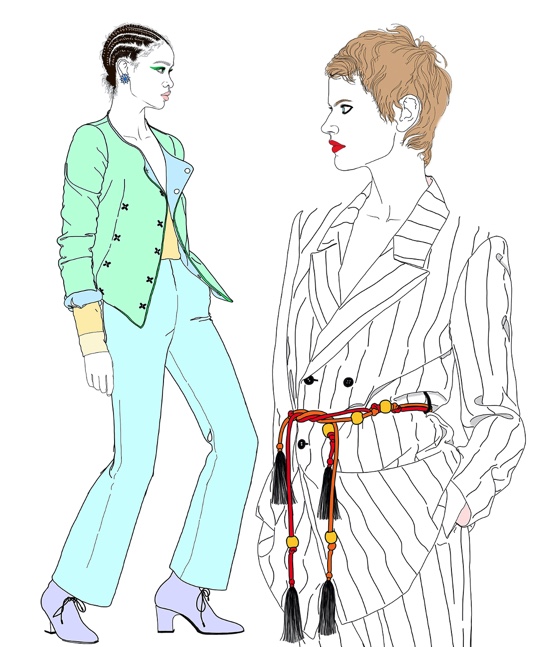
Thank you for joining us, Montana and Joanna! You both have such remarkable bodies of work, and we are delighted that you are happy to share these with us. How did you both meet?
Montana: We met at Quentin Blake Centre for Illustration (formerly House of Illustration), Joanna attended a fashion illustration masterclass that I was leading. We had a mutual admiration of each other’s work and formed an instant friendship. It’s so fulfilling to meet and interact with people from various career paths that take an interest in fashion illustration and attend my masterclasses. I get inspired by their creativity and it’s humbling to be a part of their journey into the industry.
Joanna: Montana is pivotal in my career. I took her Fashion Illustration Masterclass at HOI, and never looked back – gaining an incredible, inspirational friend in Montana. I was already working as an illustrator but Montana was pivotal in me following my passion. I don’t know if Montana realises the impact she had. I have everything to thank her for. She represents all that is great about our industry.
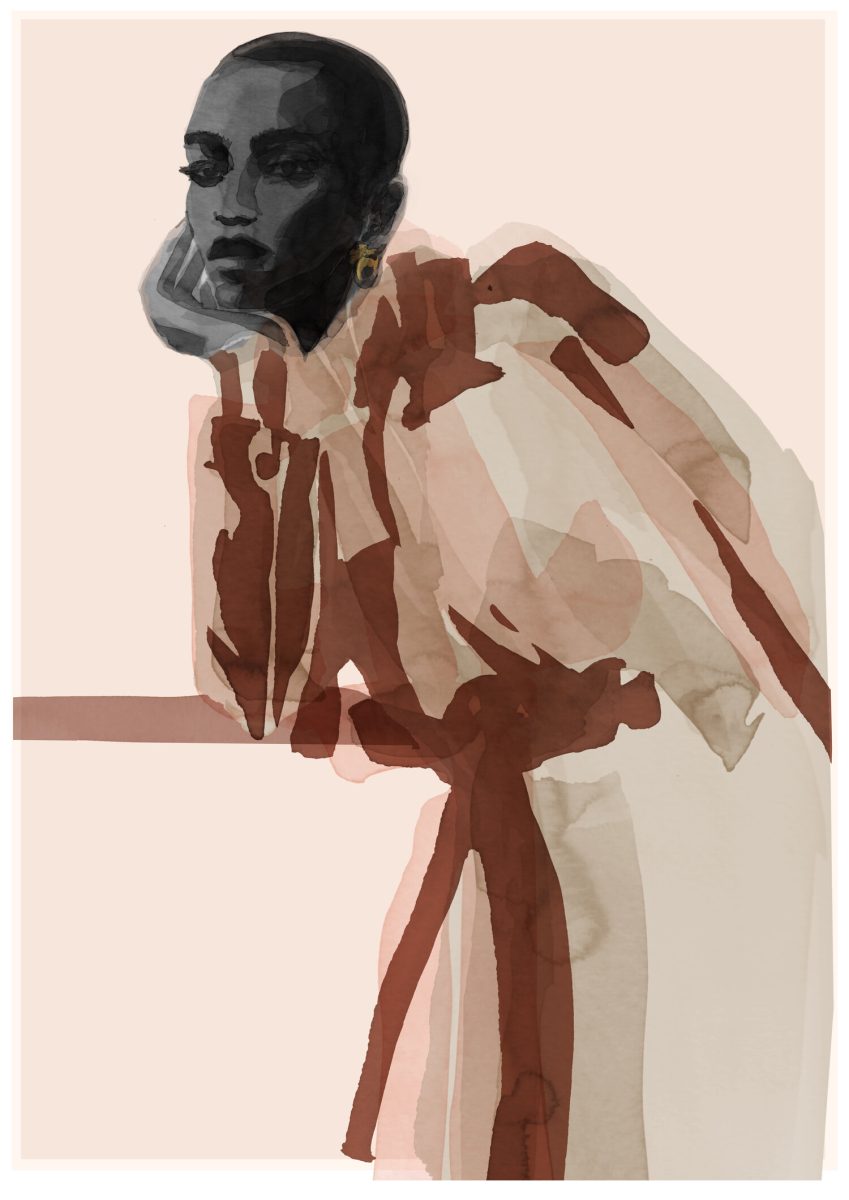
London Fashion Week 2022 is fast approaching. For those who are especially interested in fashion illustration, could you each describe your version of ‘A day in the life of a fashion illustrator’?
Montana: My day typically starts at 5:55am, checking emails for any enquiries or developments on current projects etc. For fashion weeks, planning out my outfit is paramount as with every day, I also dress up when working from home. It’s essential to feel comfortable and confident in what you’re wearing, I find that translates into my work. I work in a very considered and deliberately slow pace, so I haven’t illustrated at live events at all.
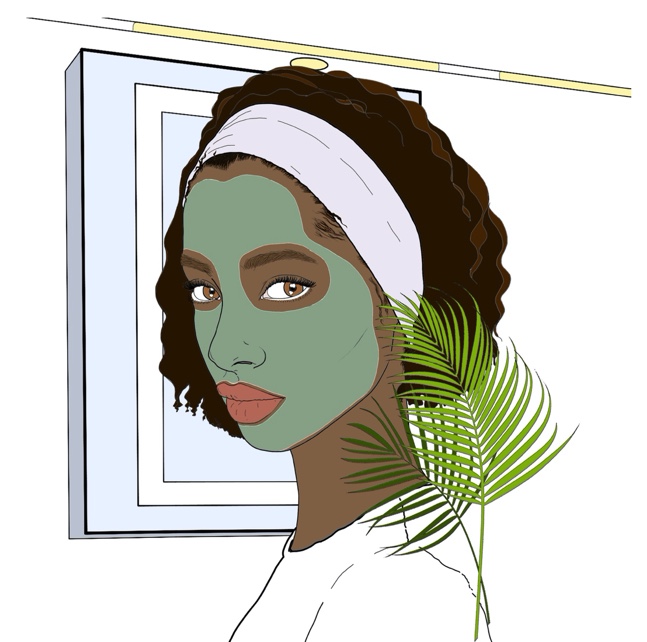
I attend shows either by invitation from designers, brands, magazines or through my own initiative. My focus at fashion week tends to be the individual styling of the attendees, the models, stylists and surrounding fashion crowd. I either photograph people in and around shows or source images online afterwards to use as references – I also browse through magazines and cut-outs that I’ve collected over the years. Then, I allocate specific days to sketch out different parts of outfits from different images to create a new and interesting composition.
observing the texture of the fabric, discovering small or hidden details and even the labels are fascinating.
Montana Forbes
On any day that I’m seeking inspiration, I head out to vintage stores or art galleries. I enjoy interacting with the vintage store owners and being tactile with the clothes, observing the texture of the fabric, discovering small or hidden details and even the labels are fascinating. It’s so interesting to hear the process of sourcing and how they choose the clothes. Occasionally, I have brands send me items from their collections and I quite enjoy trying on the clothes to get a sense of the fit, photographing them on myself or a friend and illustrating them. I usually end the day by sorting out my studio, in preparation for the next day.
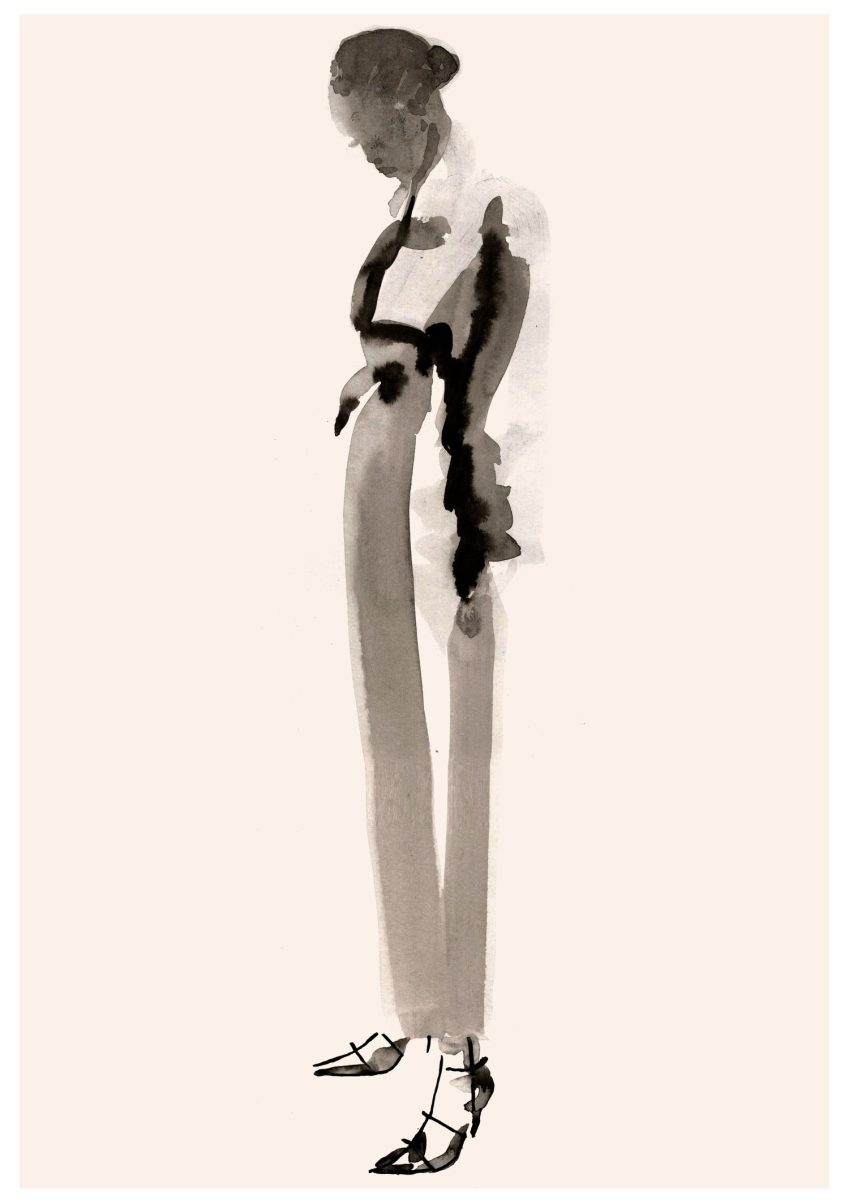
Joanna: It begins waking early and packing up your kit for the day – all the essentials for drawing live and easily in any setting. Then traveling and getting to the show (enjoying the fashion week outfits on the tube and in the street), grabbing a coffee and into the show. I normally work side of stage or backstage, so you need to quickly set up, and use the media appropriate for the space. In positions where you have more room you can use a range of materials; around garments or perched in a tiny space it can be useful to make sketchbook drawings. I pack for both situations.
As quickly as possible I create warmup sketches – anyone or anything to ease into the show. Fashion week illustration is physical, gestural, fast, expressive, and warming up really helps me perform at my best.
Fashion illustrators are agile and chameleon
Joanna Layla
For the last few seasons, I have been artist in residence with Fashion Scout at London Fashion Week – spending the day with them at their shows drawing their programme of emerging designers. My favourite part is drawing backstage capturing ‘moments’ behind the scenes – it’s magical. There’s an electricity that is so exciting to be a part of. I love that I can capture that as a fashion illustrator – the speed of the show and the more intimate, introspective moments backstage.
Fashion illustrators are agile and chameleon. I like capturing moments both in drawings and snapshots to use later. At the end of the day, getting home and into the studio to work up any unfinished sketches, interpreting your sketchbook notes – and sending off the artwork files to the designer or platform. Seeing in real life the clothes moving on the models imprints on the brain and really adds to the work, the sketches seem alive. Fashion week days are long beautiful whirlwind days.
Given your experiences, what do you wish you had known about fashion illustration and your route to it, when you first began? And what makes it worth it all worthwhile?
Montana: I wish I’d been more proactive about researching and connecting with other fashion illustrators. It’s awe-inspiring to see the different approaches and materials used to create fashion illustrations. I’m grateful for the connections and friends, that I’ve made along the way like Joanna, it makes it all worthwhile having peers to have discussions with about our careers, interests, and family life. There’s no road map into fashion illustration but it is certainly refreshing and encouraging to see more diverse illustrators bringing clothes to life in this form, through our own unique and individual perspectives. I get a great satisfaction from observing and depicting style and also, being able to contribute and to be a part of fashion illustration as an industry – hopefully that inspires other people especially from diverse backgrounds to see this as a viable career.
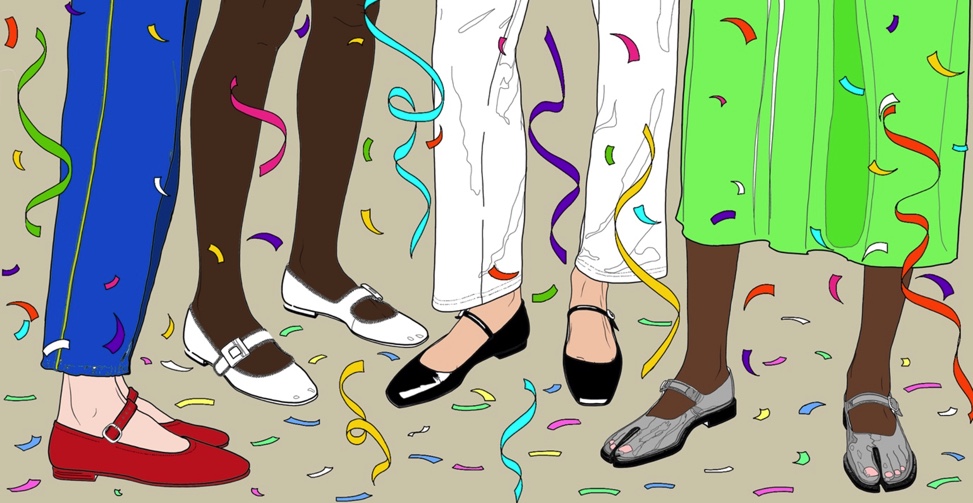
Joanna: I didn’t train as an illustrator and I didn’t realise that fashion illustration as a contemporary discipline – as a full time job – existed. I knew about the illustrations used for fashion design purposes, but I genuinely had no idea that fashion illustration as a discipline akin to photography as an end-product fashion image-making tool existed in the contemporary world. Which feels crazy now. It took me a few years working as an illustrator to realise I could take my career in that direction.
I think understanding that fashion illustration is an art form that has multiple applications across fine art, advertising, brand language, and fashion editorial is so important. The illustrator is often art director, stylist and artist in one – which is such an exciting skill set – and one that I love. It is capturing a designer’s identity in your own style and distilling their aesthetic, garment, personality, context and vision into a drawing. It is my dream job, from fast runway work to more considered fashion editorial and working with brands. I feel huge gratitude and love every day that I get to do this for a living.
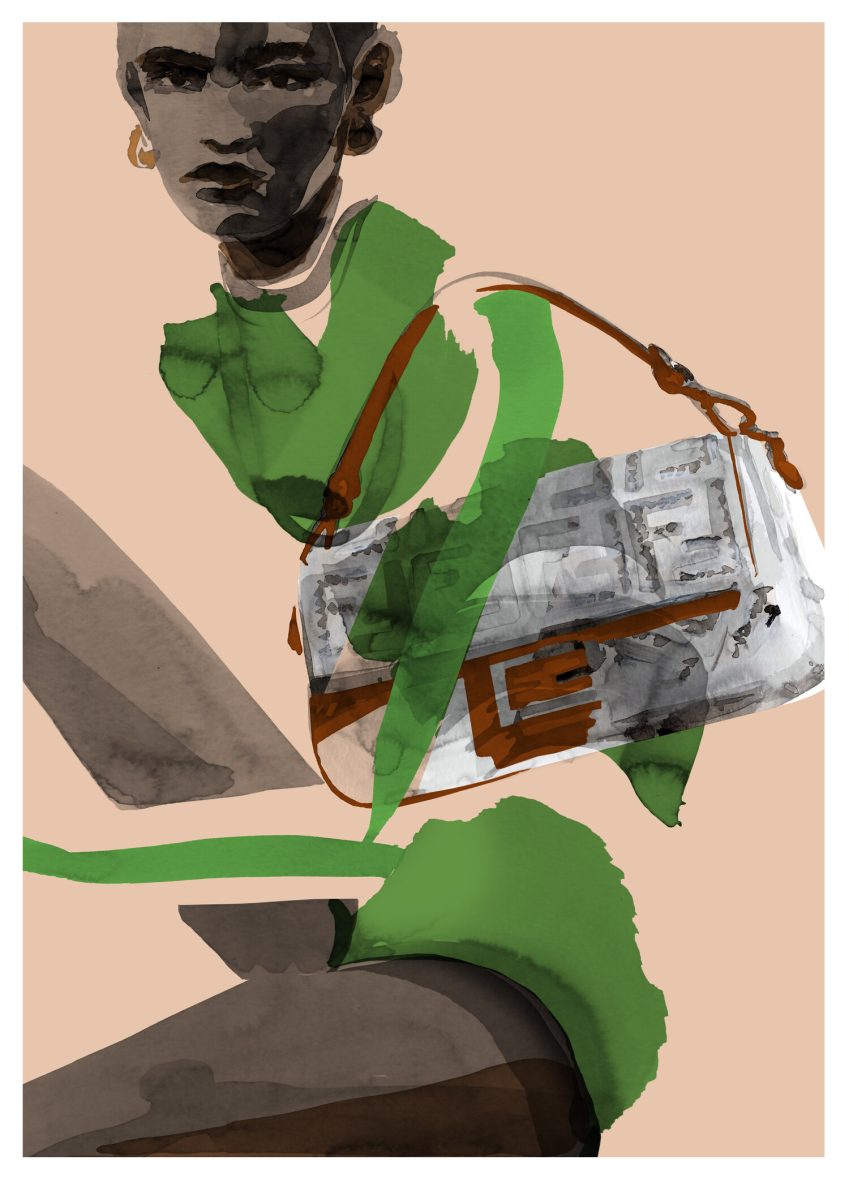
Leading on from your own experiences, what should illustrators who are new to the industry or who are interested in fashion illustration expect, and what advice would you like to share with them, on maximising LFW week?
Montana: Working long hours is sometimes part of the course, keeping abreast of fashion trends and being aware of established as well as new designers. Like any industry dedication to the artform is important, experiment and seek out other illustration styles (not just in fashion illustration) – get to know your strengths i.e. if you work at a fast pace then live events are avenues to explore. For longevity, continuously cultivate and be confident in your own unique mark making. It’s also useful to familiarise yourself with fashion industry terminology, it’ll come in handy in the communications from commissioners and the briefing process. I highly recommend wandering the streets during fashion week to soak up the atmosphere and creative scene. Do try to attend some shows live as well, it’s quite a special and exhilarating experience and you never know who you might come across, possibly a new client or collaborator.
For longevity, continuously cultivate and be confident in your own unique mark making
Montana Forbes
Joanna: My LFW Advice: Bananas. Coffee. Good packing. Preparation. Practice. My advice on maximising LFW: There is space for fashion illustrators to get experience and enhance LFW. LFW events can take lots of different forms – and if you can’t get into the headline shows, there are a myriad of other popup events where you can get live drawing experience. There will normally be a listing of LFW popups for each fashion week – especially in London focused publications/websites. Contact organisers and see if they would like live drawing, or if you can attend their event. Platforms range from headline designers, to emerging designers and graduate shows. There are opportunities that may not appear obvious on the surface – and they provide a great way for you to build up your live portfolio.
LFW is also accessible online now which has changed the game in terms of equality and accessibility. Illustrators are following the shows online.
Illustration can be a wonderful way to communicate an idea, to tell a story – how do you like to utilise the form in your visual language whilst interpreting the work of the designers/client?
Montana: I have 3 pillars to my creative process – form, line and colour and this directs my approach to each illustration. Form (for the overall composition), Line (drawing and playing with positive and negative space) and Colour (to provide energy and mood). I’m personally fascinated by the psychology of fashion and the choice of clothes we wear, particularly the uniform or tribal dress codes. I strongly believe that clothes have an effect on our mental and emotional state, as well as it being a connective element to our surroundings and each other. I champion sustainability, hence my love for vintage clothes and I also support brands that are conscious with an ethical purpose. Most of my personal work is vintage inspired. I collaborate a lot with vintage store owners to highlight the cyclical nature of “fashion”, today’s trends are almost always based on yesteryear’s imaginings.
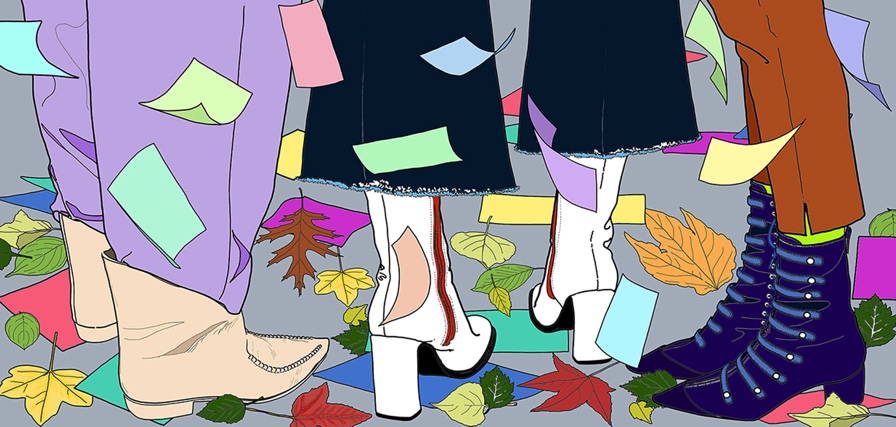
Joanna: I love this question. It touches on what is so special about illustration as visual communication. As an illustrator you can communicate a story or idea on so many levels – through colour, shape, form, motif and texture – as well as the literal. As humans, we respond to the tangible immediacy of the hand-drawn – it speaks on a human, primal level. Illustration is the art form that can add this magical component to documenting fashion.
I use the form in all my fashion images. I love getting a brief and working out how to translate their ideas into a figure – that perfectly captures the aesthetic and concept of a brand. I love the idea of pushing fashion imagery to do more than just accurately depict a dress. A favourite aspect of my work as a fashion illustrator is translating a brand into image, creating a visual language true to the brand aesthetic and vision. I think my work with E.L.V. Denim epitomises this.
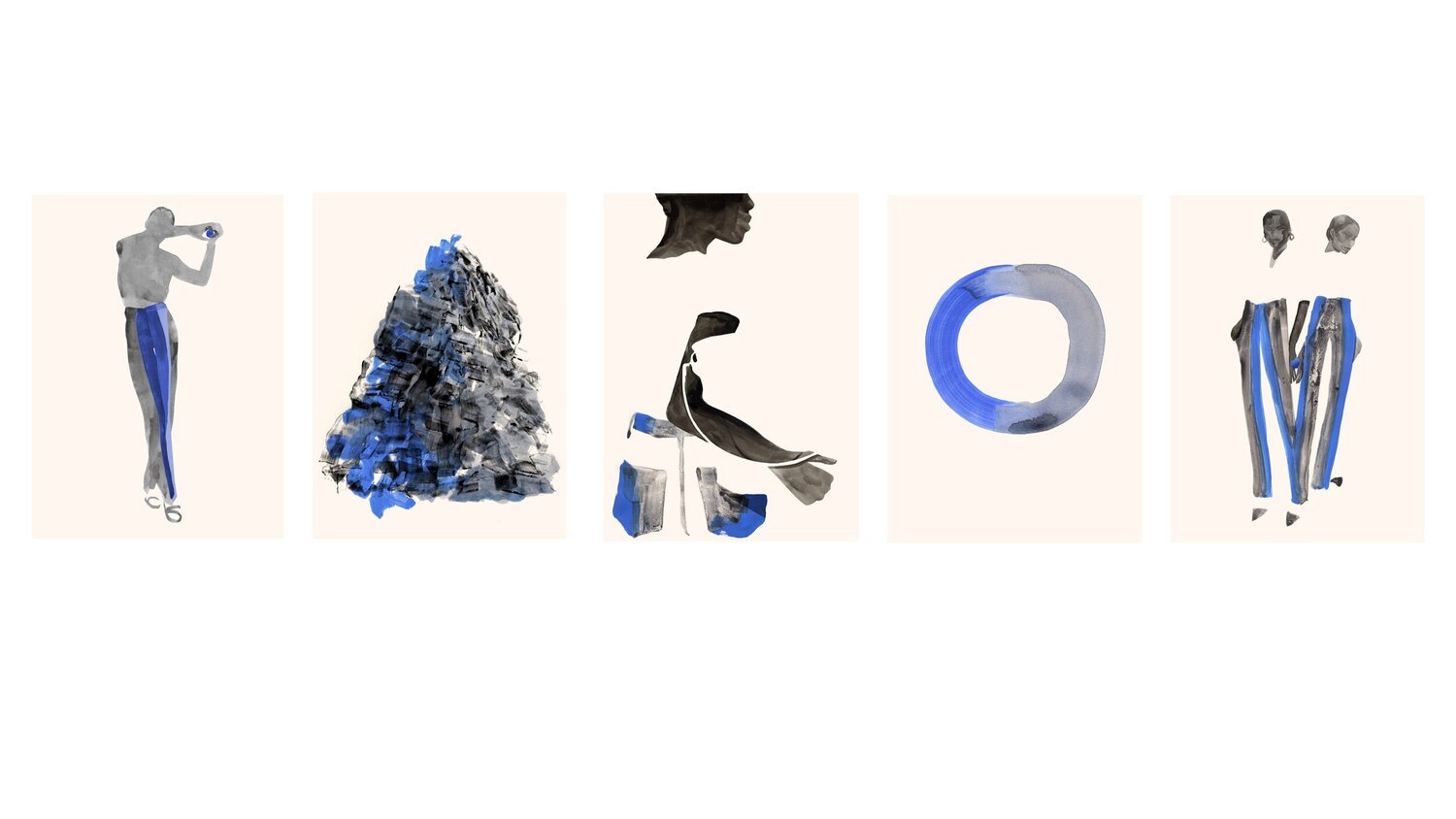
Given how ‘fast fashion’ is on the rise, in terms of sustainability and ethical fashion, what would you say are the challenges for the industry and in your work?
Montana: It will take a lifetime for the fashion industry to become totally sustainable however there’s a collective mindset and efforts within the industry working to address that. Fashion illustration as a medium can be totally sustainable without needing too many human resources to create outstanding imagery. It is important for everyone to participate in adopting more sustainable habits and practices. As an image maker I’m conscious of the materials and specific medium I use to create my artwork – pencils to sketch and Photoshop for colour addition. I’ve experimented with incorporating actual fabric samples from vintage clothes and using recycled paper. In the essence of my work, I try to capture a timeless and contemporary sensibility and the craftsmanship of vintage garments in a way that is relatable and relevant. Ultimately, I aim to celebrate the spirit of individual style in well-worn clothes.

Joanna: This is huge topic and one that I know plays a lot on Montana’s and my minds. On the personal level, we can choose as fashion illustrators the media we use and change our practices to incorporate more sustainable choices. I recently worked on an amazing project with E.L.V. Denim and Edward Bulmer Paint to use their zero-waste techniques in my own practice.
As part of the fashion industry, fashion illustrators have a responsibility too to champion best practice where they can. And as image-makers we can raise questions about the context in which clothes are made and by whom.
On a broader scale, I think there is an opportunity for the industry to recognise illustrators as the more sustainable choice in image-making. In a studio, on their own, a fashion illustrator can conjure a whole world on paper. Without air-miles, crew, production carbon foot prints. I think there is space to use both illustrators and photographers to create iconic fashion editorial and imagery in a more intelligent and sustainable way.
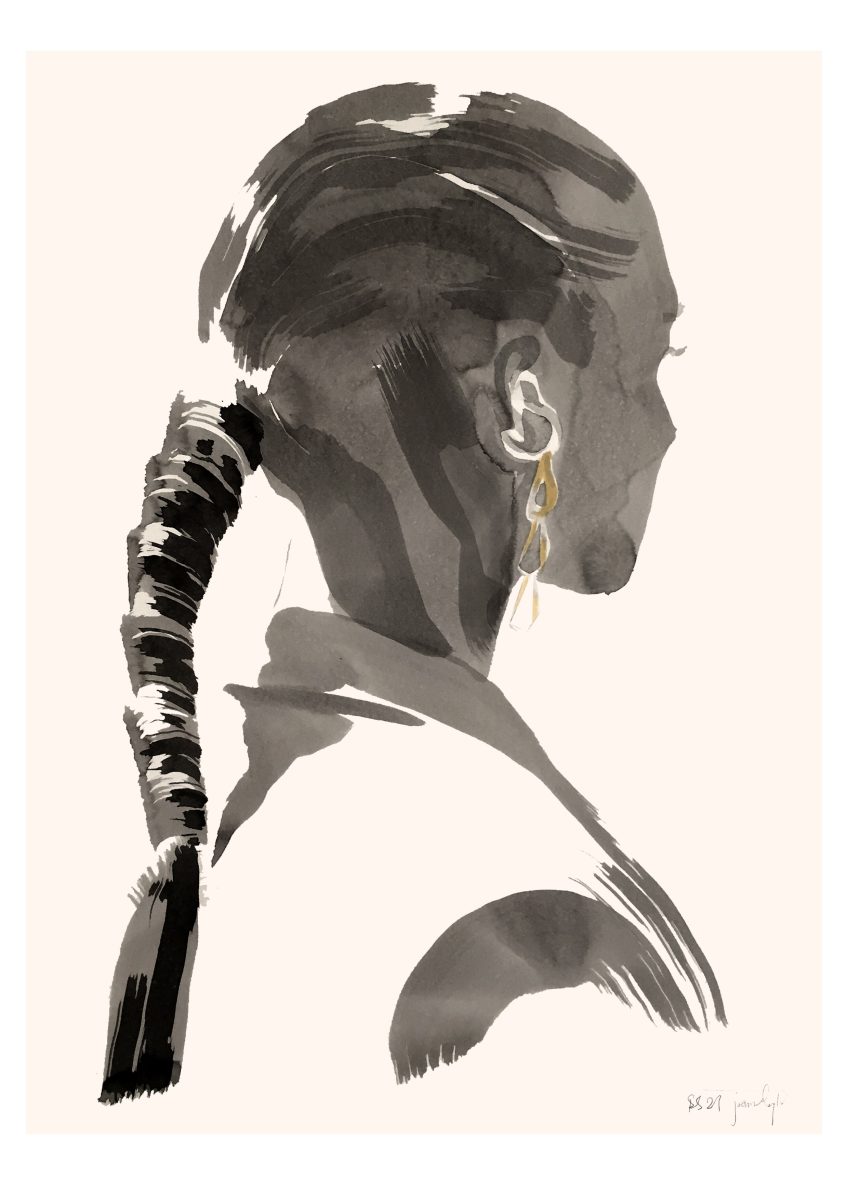
I am really keen to see more fashion editorial created by fashion illustrators and for fashion illustration to sit more easily in Illustration as a whole. It sometimes feels like a niche category of its own, whereas in reality both Montana and I work in beauty, publishing, editorial and of course fashion.
Joanna, you have said about your work, that you ‘aspire to an image that has depth, layers of meaning’ could you tell us a bit more about this and how it informs your work in illustration and as a contemporary artist?
I like to play with images that seem simple but draw the viewer into a dialogue. ‘Simplexity’ has been used to describe my work which I love.
Fashion illustration is a form of documentation. Each brushstroke carries with it context – the moment, the mood, echoes of historical, environmental and political context. LFW drawings are often unfinished and this draws the viewer in, they almost become the next layer of clothing, giving the drawing its full meaning or colour.
In my illustrations about sustainability in fashion, I often leave negative space in the image for the viewer to complete. The clothes might be the negative space, asking the viewer to question what they are taking for-granted – such us how clothes are manufactured or the materials they are made from. I love to create images that seem simple but raise questions on second look.
Montana, you work across beauty, fashion and lifestyle illustration and are a keen champion of Diversity and Equality – what are the common threads which run through these areas? And what would you say you value most about them?
The beauty, fashion and lifestyle sectors are becoming increasingly aware of the importance of representation and depicting diversity. Much like sustainability more efforts need to be employed by companies for their products and advertising campaigns to be more inclusive. Diversification in fashion illustration has produced more profound and engaging visuals, it continues to challenge the status quo and it’s wonderful to see these developments and exciting to imagine the future of the industry.
Thank you both for sharing your experiences with us!
For more details on the Industry Insight: Fashion Illustration event, head to the Quentin Blake Centre for Illustration website.
Find out more about the Artists:
Montana Forbes has established her clear style as a skilfully aware fashion illustrator, utilising her understanding of the relationship between, colour, line and form, to thoughtfully convey a mood, through her images. A resident illustrator at Elle Japan Magazine, her clients include The BBC, Capitol Records, Condé Nast and Penguin Random House. The AOI is also proud to have Montana as an AOI Board Member and a genuine champion of greater diversity and sustainability, within the creative industries and beyond.
London-based illustrator and contemporary artist, Joanna Layla combines a clear interest in visual language and communication, through illustration. Her figurative, conceptual style is borne out through instinctively fluid brush strokes and mark making. With her collaborative role within the fashion industry Joanna works towards communicating greater sustainability including her recent collaboration with the sustainable fashion brand ELV Denim. Named as Fida’s “One to Watch 2021”, her current solo show of original fashion works on paper “Art + Fashion” with Acid Gallery is at High Lille, France.
Back to News Page
